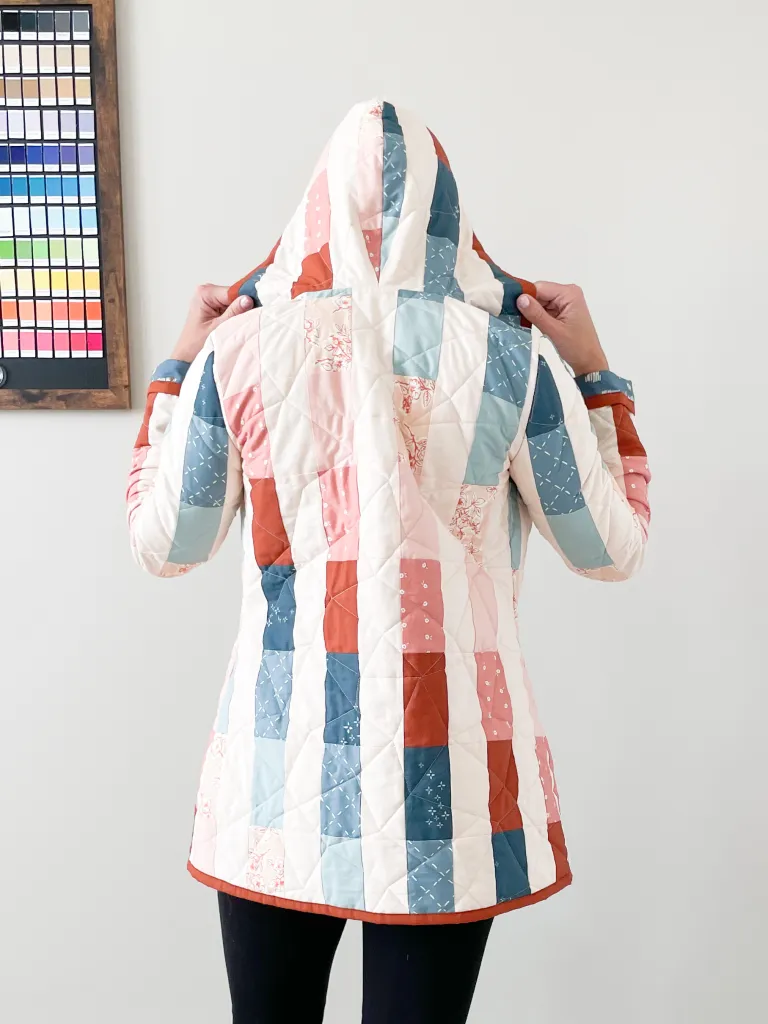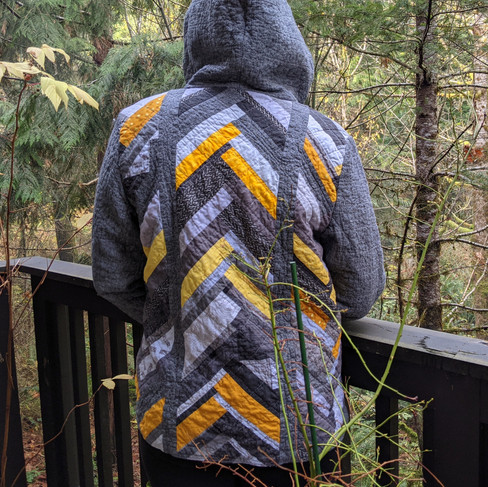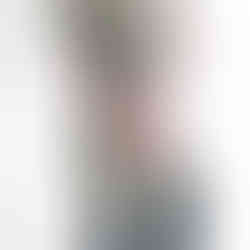Quilt coat design inspiration
- Carli Marsico
- Mar 16, 2024
- 5 min read
Updated: Mar 19, 2024
So you're ready to make a quilt coat . . .
Maybe you've been salivating over other quilt coats you've seen on the Quiltstagram. Or maybe you're looking for something to show off your skills at the office or this year's QuiltCon.
But how to get started? There are so many beautiful patterns and designs out there. How do you narrow it down to just one?
That, my friend, is a very difficult question. But today I'm going to run through the various options available to you to hopefully narrow down your choices and help you settle on a design that you'll LOVE!
Contents:
Quilt coat design types
As you've probably seen, quilt coats come in lots of different flavors and styles. However, most of those fit into one of the four following categories.
In general, quilt coats can be made by either cutting apart an existing quilt (repurposing) or sewing a quilt top specifically for making into a quilt coat (purpose-made). All of these design types can be done with either option, it just depends on if you're looking for a vintage look or not.
Check out this Pinterest board for more inspiration.
The All-over
This is the original quilt coat design. You take one repeating quilt pattern and use it for all pieces of the coat, literally using the quilt as you would fabric.
It's particularly conducive to repurposing an old, vintage quilt, but you can just as easily sew a quilt top specifically for a quilt coat using an all-over design.
Other Designs:
Serenity - by Truly Materialistic
Untamed - by Amy Lollis Design Co
Plaza Mayor - by Boho Quilt Co
You should plan for making at least a throw-size quilt top if doing an all-over design. The exterior fabric requirement from your coat pattern is the amount of fabric that will be required. Usually, this will fit on a throw or twin size quilt.
The Wholecloth
If you're all about the quilting aspect of quilt making, a wholecloth design might be just the thing for you. This is also great if you're looking for something a little more subdued.
Basically, you just quilt a bunch of yardage with which to cut your pieces from. This is the time to let your custom quilting skills loose. Go crazy! The more intricate the better.
If you're into graffiti quilting or Judi Masden-esk ruler quilting, this would also be a great time to use it! Using bamboo or silk batting as the middle layer can help keep the pieces from getting too stiff from all the quilting.
Again, the exterior fabric requirements for your coat pattern dictate how much fabric you'll need. Count on at least 2-3 yards of 42" wide fabric.
The Mullet
This is my favorite! The mullet is a hybrid between the all-over and the wholecloth. Essentially, the quilt design is confined to exclusively the back panel of the coat giving a "business in the front, party in the back look".
It's perfect if you're looking for a toned-down quilt coat that still has a little quilty flair. Almost any patten works well for this, but it's particularly well-suited for directional, intricate patterns. I used my own Wonky Woven design on my very first quilt coat and loved it so much, I just had to write a pattern for it.
Other designs:
Funkadelic - by The Retro Quilter
Minmi - by Sewspicious
Eyelet Lace - by Kindred Quilt Co
Since you are only piecing the back panel, you'll only need about a baby-size quilt top. The rest of the fabric will just be plain background fabric. Usually 2 yards or so is sufficient.
The Embellished
This final design is a bit like the mullet, only the design isn't confined to just the back panel. You might add a block to the back of the coat and smaller blocks to the pockets or sleeves to create a subdued, design that still shows some quilty flair.
This is a great way to use up orphan blocks or showcase super intricate FPP blocks because you only have to make a few. blocks
Allow for at least 2-3 yards of exterior fabric since most of your exterior will be fabric, not quilt top.
Other things to consider:
Real estate is limited on coats - pick a design that is small enough to show the full effect on sleeves and front/back panels
This is a garment - if your vintage quilt is super beat-up, it's not going to hold up to being worn. You may also want to stay away from white or light-colored fabrics that will be difficult to keep white when being worn regularly.
Coat Patterns
Almost any coat pattern can work for a quilt coat, but some work better than others. There are also some that are specifically written for quilt coats and others that are just more generic coat patterns.
Here are some general guidelines:
Avoid things that are fitted too tightly. Quilts are bulky; the material is thick. If you choose a very structured, fitted pattern, it's probably not going to be comfortable (and also hard to tailor unless you're an experienced garment sewist)
If this is your first garment, choose a pattern that has raglan sleeves, i.e. the sleeve piece goes all the way into the neckline. This makes attaching the sleeve much easier.
Pullover patterns are usually designed for knits. They can be used to make a really cool garment, but need to be made significantly oversized because quilting fabric doesn't stretch. Also, choose patterns with large neck holes and loose sleeves. For any knit pattern, you'll want to extend the lengths of the panels and sleeves and omit the cuffs and hem-bands to bind or hem your edges.
Patterns:
Tamarack Jacket - collarless, standard-length jacket that comes both with and without a hood. Designed to be specifically a quilt coat.
Patchwork Chore Coat - collared, standard-length jacket with button and hood options. Specifically designed to be a quilt coat.
Coda Quilted Coat - comes in both collared, collarless, and hooded versions. Standard-length jacket with buttons meant specifically as a quilt coat.
New Look 6585 - Shawl collar coat with both long-length, standard-length, and hooded versions. This is perfect if you want a robe-like feel, but there is a lot of extra fabric around the opening that can be overwhelming if you don't want the robe-like look.
Elemental Coat - Versatile, collarless, collared, or hooded quilted jacket specifically designed to flatter plus sizes. Several length options including cropped.
Nova Coat - Cocoon style long and mid-length cardigan-style coat with deep front pockets
Hovea Jacket - collarless, drop-shoulder cardigan-style coat with both long and cropped lengths
Camden Slouchy Sweater - loose, funnel-neck pullover sweater that is suitable for quilt coats. Just omit the hem-band
Return of the Poncho - quilted, hooded, poncho pattern if you're looking for something cozy and unique.
Quilted hoodie - Shawl collar hoodie pullover. Templates are free.
Of these options, I'd probably go with the Patchwork Chore coat if you're looking for a standard-length hooded jacket.
I'd go with the Nova Coat if you're looking for a little bit more chic, modern look in a longer profile.
If you want more of a gen Z, vintage, collared jacket, I'd go with the Patchwork Chore coat again, but use the standard collared version.
All of these patterns can be modified to achieve a longer length or add accessories like a zipper, buttons, or lining. We'll be going over how to make those adjustments later, but you can read more about basic pattern adjustments here.
What kind of quilt coat will you make?





















Comments